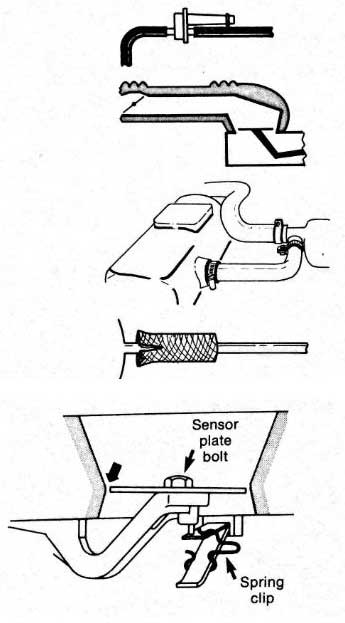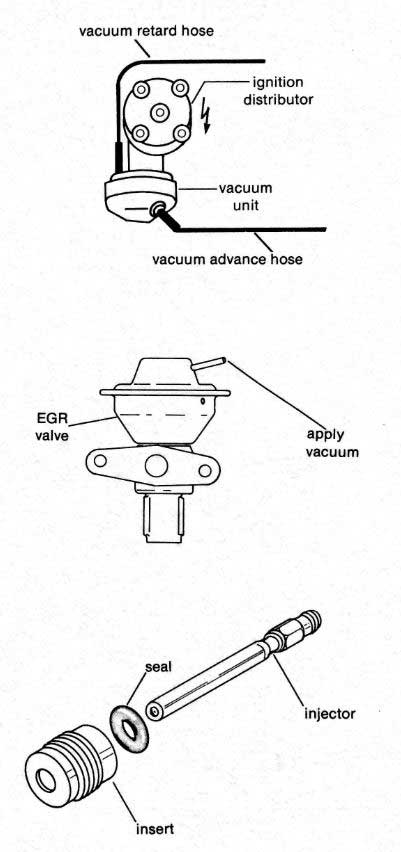Check for excess intake air entering the engine
- Check Hoses and Boots Check carefully for leaks:
- Hoses and clamps for auxiliary air regulator.
- Boots, ducts and clamps connecting air flow sensor to throttle valve.
- PCV hoses, clamps.
- Vacuum hoses, clamps, reservoirs.
- Check the Air Sensor
- The air sensor plate is lifted from the air cone during starting and running.
- The air sensor plate height should be checked with the engine off, warm, and with residual fuel pressure still in the system (within 10 minutes after shut off)
- The sensor plate should be even with the bottom rim of the air cone at the edge nearest the fuel distributor.
- To adjust bend spring clip up or down.
- The sensor plate should also be centered in the air cone.
- Check Vacuum Advance and Retard
- With the engine idling remove the vacuum retard hose – idle speed should increase if the vacuum retard is working.
- Reconnect the vacuum retard hose.
- Increase engine speed to 3000 RPM, remove vacuum advance hose – engine speed should decrease if vacuum advance is working.
- Reconnect vacuum advance hose.
- With the engine idling remove the vacuum retard hose – idle speed should increase if the vacuum retard is working.
- Check EGR Valve
- The EGR valve must be closed during starting and idling.
- With engine idling, connect a vacuum pump and apply vacuum:
- Valve should open
- Engine speed should decrease
- Release vacuum:
- Valve should close
- Engine speed should increase to normal
- Check Injector Seals And Inserts
- Remove injectors and check injector seals and inserts.
- Check injector seals carefully for damage or looseness.
- Check that the injector inserts are tight with 12mm hex wrench.
- If inserts are loose:
- Remove inserts
- Clean threads
- Apply Loctite T with Loctite 620 (or equivalent).
- Torque inserts to 22Nm (16 ft.lbs.)
- Check injectors before installing (see following page)

